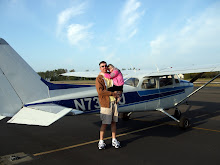Another 2hrs of prep that may be a little ho-hum for a write up, so here’s a short version…
We began with a few review questions, covering certificate, document, and airworthiness requirements, as well as airspace. All pretty solid.
Weather was a weak point last time, so this would be a primary focus for this session. My instructor would ask me to explain some weather phenomena, and how it would affect VFR operations, and we’d discuss it in detail if my understanding was shaky, or I had additional questions.
We then covered weather reports and forecasts. I spent a considerable amount of time studying the numerous types of reports:
METAR-aviation routine weather report
Manual observations
ASOS-automated surface observing system
AWOS-automated weather observing system
PIREPS-pilot reports
radar reports
Forecasts:
TAFs-terminal aerodrome forecast
FA-aviation area forecast
Inflight aviation weather advisories
AIRMET-airman's meteorological information
SIGMET-significant meteorological information
Convective SIGMET-thunderstorms
TWEB-transcribed weather broadcast
Wind and temperature aloft forecast
Aviation weather carts:
Surface analysis
Weather depiction
Radar summary
Significant weather prognostic
Winds and temperature aloft
Composite moisture stability
Convective outlook
Constant pressure anylysis
and was able to answer most questions my instructor gave me, but probably could use a little more study in this area just for comfort.
I’ve been able to read the cryptic language used in METAR’s, TAF’s, and FA’s, for some time, and breezed through that line of questions.
Aircraft performance was also a focus for this session, and included calculations for W&B, density altitude, takeoff and climb performance, etc, as well as a discussion of aircraft performance. Pretty solid here as well.
A very worthwhile 2hrs, with much studying still to do!
After two weeks of being on the ground, it looks like I will be able to get up in the air for 2hrs of solo practice time tomorrow. I am looking forward to that!







